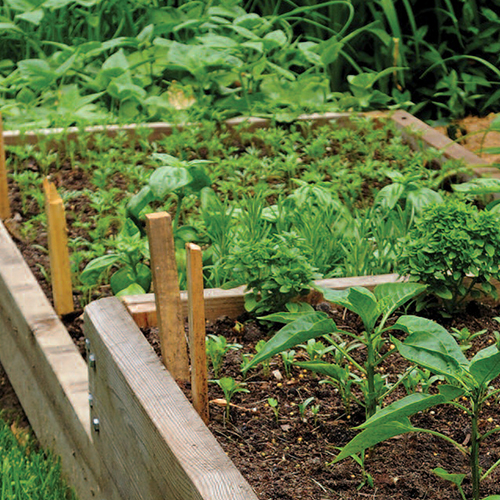Mid-season garden checklist
Burpee Edible Gardening Team Members
Around this time of year your vegetable plants have established themselves. They’re growing and filling their container or garden bed, and probably setting loads of fruit. What an accomplishment! But also around this time you may encounter some changes or obstacles. Whether it’s a yellowing leaf, a leathery fruit, or a plant-eating pest, learning how to scout your garden and be proactive before bad things happen is the sign of a green-thumb gardener. We’ve got a great podcast about Proactive Gardening here. Be sure to listen in!

The good news is there are plenty of resources available to identify plant problems, and any number of experts at your disposal to offer their advice for treatment. From a knowledgeable neighbor, to a helpful master gardener, a quick Internet search or contact-us form can get you the answers you seek. You can even contact me, your Burpee Garden Coach! Personally, I like using my local extension office to keep me updated on regional issues and information. Like this Tomato Disease Identification Key from Cornell University.
The key is to catch plant disease early. Get to know your garden by visiting daily, and monitoring for any wilting, yellowing or spotting. This podcast offers more info on how diseases occur, so you can be on top of any changes to your plants.
But whether you have 5 minutes or 5 hours, here are a few mid-season to-do’s to keep your garden looking great this time of year:
- Water evenly and deeply; don’t let plants wilt!
- Remove any dead or damaged fruit to encourage fresh flowering
- Mulch your plants to keep in moisture – it’s getting dry out there!
- Fertilize your vegetables to fortify them into the summer months
- Look under plant leaves for sap-sucking bugs, leaf-miners or caterpillars.
- Weed, weed, weed!
The Good, The Bad, And The Bugly
Bugs and critters are inevitable in any garden, but simple, routine practices can help keep them at bay. Eliminate a place for bugs to hide by keeping your garden clear of weeds, dead fruit and foliage, rocks and twigs, and remember to monitor your garden regularly.
True, most insects are called “pests” for good reason! But there are some insects you should actually encourage to take up residence in your garden. Ladybugs, spiders, lacewings and some wasps can help control more destructive insects. You can entice these beneficial bugs by planting yarrow, Queen Anne’s lace or clover. They’re also attracted to basil, dill and rosemary, which you can enjoy as well!
Organic Pest Control
If you want an all-purpose organic insecticide, look no further. Our friends at the gardening TV show “Growing a Greener World” have this recipe for success:
1 bulb of garlic
1 small onion
1 tablespoon cayenne (red) pepper
2 tablespoons liquid soap
1 quart water
Spray bottle
Mix all ingredients together in the spray bottle. Use sparingly and apply either in the cool of the evening or early in the morning for the least plant damage.
So stay strong, and stay on top of your flourishing vegetables to keep them going through the end of the season. And be sure to browse through our Garden Help Library for more advice and helpful tricks.